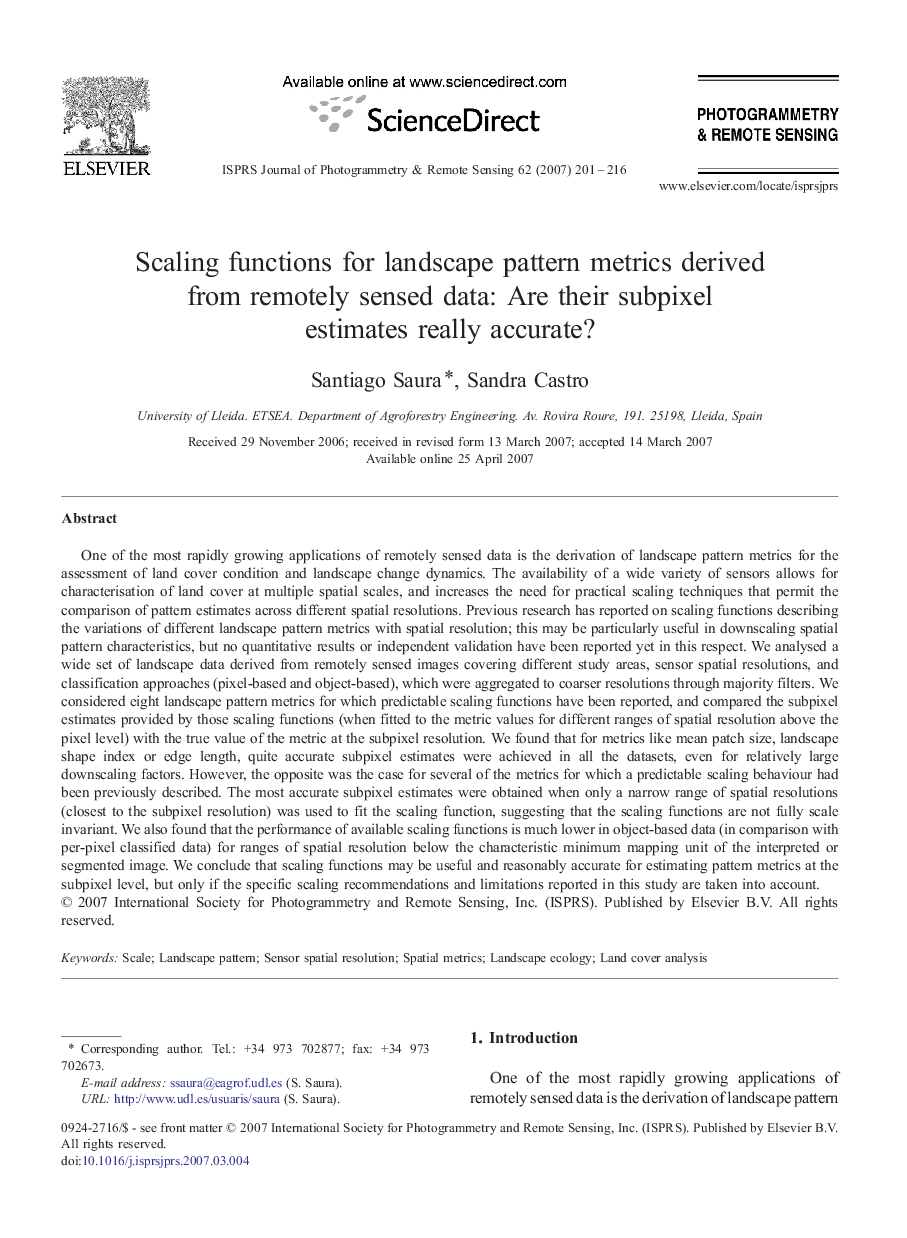| Article ID | Journal | Published Year | Pages | File Type |
|---|---|---|---|---|
| 557480 | ISPRS Journal of Photogrammetry and Remote Sensing | 2007 | 16 Pages |
One of the most rapidly growing applications of remotely sensed data is the derivation of landscape pattern metrics for the assessment of land cover condition and landscape change dynamics. The availability of a wide variety of sensors allows for characterisation of land cover at multiple spatial scales, and increases the need for practical scaling techniques that permit the comparison of pattern estimates across different spatial resolutions. Previous research has reported on scaling functions describing the variations of different landscape pattern metrics with spatial resolution; this may be particularly useful in downscaling spatial pattern characteristics, but no quantitative results or independent validation have been reported yet in this respect. We analysed a wide set of landscape data derived from remotely sensed images covering different study areas, sensor spatial resolutions, and classification approaches (pixel-based and object-based), which were aggregated to coarser resolutions through majority filters. We considered eight landscape pattern metrics for which predictable scaling functions have been reported, and compared the subpixel estimates provided by those scaling functions (when fitted to the metric values for different ranges of spatial resolution above the pixel level) with the true value of the metric at the subpixel resolution. We found that for metrics like mean patch size, landscape shape index or edge length, quite accurate subpixel estimates were achieved in all the datasets, even for relatively large downscaling factors. However, the opposite was the case for several of the metrics for which a predictable scaling behaviour had been previously described. The most accurate subpixel estimates were obtained when only a narrow range of spatial resolutions (closest to the subpixel resolution) was used to fit the scaling function, suggesting that the scaling functions are not fully scale invariant. We also found that the performance of available scaling functions is much lower in object-based data (in comparison with per-pixel classified data) for ranges of spatial resolution below the characteristic minimum mapping unit of the interpreted or segmented image. We conclude that scaling functions may be useful and reasonably accurate for estimating pattern metrics at the subpixel level, but only if the specific scaling recommendations and limitations reported in this study are taken into account.
